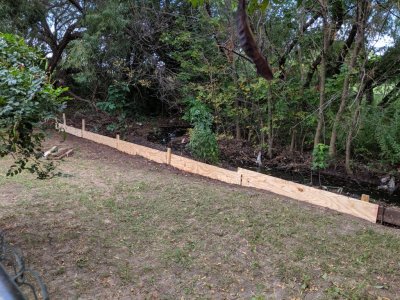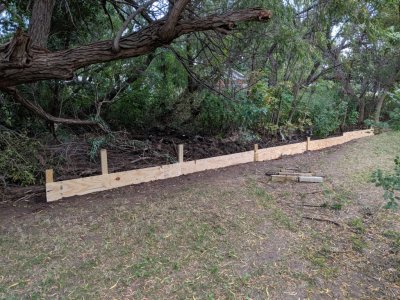Storm Drainage Control, Sep 2019

IMG_20190912_180113b.jpgI didn't think to take any photos till I got to this stage. |

IMG_20190912_180141b.jpgLowe's staff cut 3-4'x 8'x 3/4" sheets of plywood into 16" strips and I cut 2-3 treated 2"x 4" x 10' boards in thirds and made points on them for support stakes (I knew 9 sections would not reach across the full width of the backyard, but I wanted to test my design). Using an old 2"x 8" board as a straight edge and a "sharpshooter" shovel, I dug a narrow trench about 6" deep along the north edge of the drainage ditch. |

IMG_20190912_180155b.jpgI started by screwing 3 pieces of plywood together lengthwise, then placed the sections of plywood into the ditch, using the straight-edge to align them. Then I used a sledge hammer to put the stakes in place and screwed the plywood to them. Then I added additional sections of plywood. I started running into tree roots at the west end of my trench, so used some metal stakes and placed the straight-edge board at the west end of my dam, expecting it would not be sufficient to hold back water. The next day, after a nighttime rain, water was still running down the 3' wide trench earlier dug into the yard by water overflowing from the drainage ditch, but I hadn't gotten out in the dark to know from whence the water was originating now. Next step is to chop out roots and continue the trench to the west end of our property and install more sections of the dam to see if that holds the water at bay. |
click on thumbnails for full image











